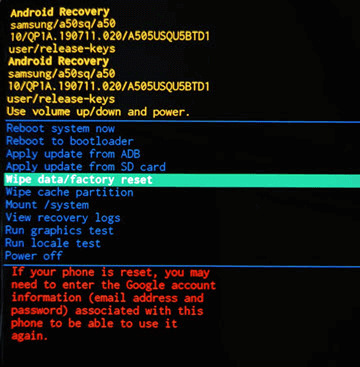

- How to find files in terminal recovery mode how to#
- How to find files in terminal recovery mode software#
- How to find files in terminal recovery mode download#
- How to find files in terminal recovery mode mac#
I have an older computer running Sierra, and when I go into Recovery Mode on that one, I am definitely able to see the /Users/ folder with no problem. So, my question is, does Recovery Mode hide this folder (for security reasons, etc)? Or is it possible that the folder is somehow lost in the corruption? This seems unlikely, but I am really worried that this might be the case.
How to find files in terminal recovery mode mac#
I've tried to think of where else I could access it, but it is simply not anywhere that is obvious to me as someone who has almost 2 decades of Mac experience. Normally that wouldn't be an issue for me, as I am experienced in Terminal enough to do that, but the issue I am facing is that my /Users/ folder is completely invisible when I try to find it via /Volumes/(OS partition name)/Users. My plan was to move off all of my user data via Terminal. I am able to boot into Recovery Mode, and I can see the contents of the drive in Terminal (meaning the hard drive is not completely inaccessible).

I'd like it if you chose to follow me.I am trying to recover some data after a sudden case of hard drive corruption that has left my OS (Mojave) unable to boot. Got a story? Drop me a line via Twitter or in comments below and let me know. Google+? If you use social media and happen to be a Google+ user, why not join AppleHolic's Kool Aid Corner community and join the conversation as we pursue the spirit of the New Model Apple? I’ve had to tell too many of my friends that all their precious images have been destroyed, or that only a limited number can be recovered using DiskWarrior, Data Rescue or Disk Drill. Please tell me you backup your Mac regularly. Now your Mac will launch and you can try to fix your Mac. Restart the Mac and hold Option once the chime sings now attach your bootable installer drive to the Mac and select it from the list (if you see a list) that appears. Once you have your bootable drive follow these steps: See it as an insurance policy as you can use this installer to startup and repair (or at least rescue data) from a sick Mac. Making it is a complex process – take it slowly and follow these clear instructions – however, it doing so is well worth the effort. And put the drive in a draw while hoping they don’t need to see it again until they need to add another OS X installer version to that drive. On that drive they should create a bootable OS X installer drive for OS X. A bootable driveĮvery Mac user should invest in a high-capacity USB 3.0 flash drive. Don’t stay there for hours, if this doesn’t happen within a few minutes it’s reasonable to assume it won’t work. Keep those keys depressed until you see a globe symbol and progress bar appear. Restart your Mac and hold Option-Command-R when the start up chime chimes. The sequence is similar to the way you usually access Recovery, with the addition of the Option key.
How to find files in terminal recovery mode download#
If you can get your Mac online you can try Internet Recovery, though this requires you to download a hefty chunk of data and takes time. (For an idea of what these applications can do, read this excellent article which remains relevant to OS X El Capitan).

Among other things they can create a complete copy (Disk Image) of your Mac, restore that image once you’ve repaired your Mac, and let you startup from the external drive the backups are stored on.
How to find files in terminal recovery mode software#
You should now be able to choose the Recovery Drive to launch your Mac.īackup software Carbon Copy Cloner and SuperDuper are both great tools for creating Mac backups.Wait a few moments and the now connected Time Machine drive should appear (you may need a password).Hold Option when the startup chime sounds.
How to find files in terminal recovery mode how to#
This is how to use your Time Machine backup to access Recovery Mode: This may sometimes be the only way to get to fix (or at least rescue data) from your Mac, particularly when you can’t get it online or its drive has become damaged.

If you do have a connected external drive with a Time Machine backup then you can use Recovery Mode from the backup. You keep backups don’t you? You really should.


 0 kommentar(er)
0 kommentar(er)
